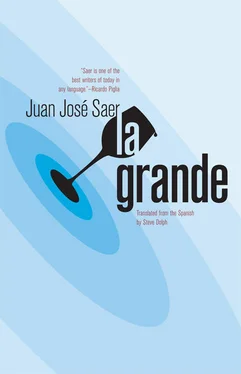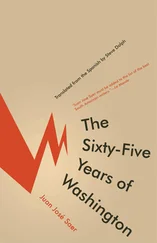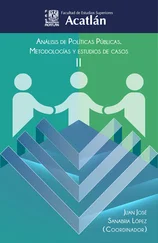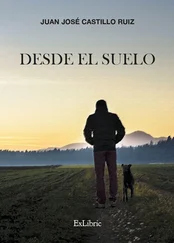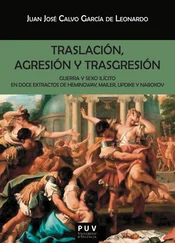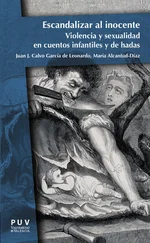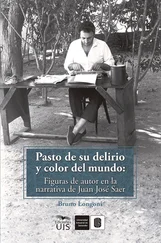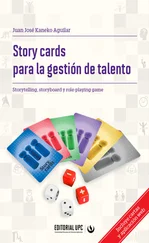This may have been an error on his part, because precisionism was an authentic local product, the most original literary movement in a city that, since romanticism and even since Góngora, had always welcomed every artistic novelty, adapting it to the regional climate and incarnating it in a local artist. We produced romantic poets in quantities greater than it would have been prudent to desire, and a story from the same movement, “The Novel of a Pale Young Man,” even appeared almost simultaneously with the first wave of realist and later naturalist novels, from which the group of regionalist writers captained by Cuello and Righi emerged. Symbolism and French poetry circulated thanks to modernismo, and, as I mentioned above, its last representatives, in the sixties, could still recite Belisario Roldán’s discourses by heart. In the forties, at the local level, the first surrealists began to appear, along with mystics and orthodox neoclassicists, who gathered around the magazine Espiga. We also had writers who practiced social realism, expressionism, what you might call a virile North American style, the objective novel, and even the writing, the practical life, and the physical appearance of the Beat generation. Every one of these movements had begun somewhere else, had traveled the world, and had ended up winning some acceptance in the city. Only precisionism had been born here, whatever the political or moral convictions of its inventor may have been, if he had any, and, likewise, whatever credit its creator may have given to his creation. Mario Brando, precisionism, and the city were as inseparable in the minds of the literary critics from Buenos Aires or Asunción or Montevideo as the three elements of the trinity probably were to Christian theologians. Anyone with a personal conception of literature wasn’t intimidated by Brando’s success in the forties and fifties (later, in the third period, he was already somewhat forgotten), and many local personalities who understood the deserved rejection of their own mediocrity before the eternal injustice of Buenos Aires toward the interior identified with the recognition that Brando and his poetic school enjoyed, and felt proud to have it as the fame of the city. They were local products like river fish, like Coronda strawberries, like the suspension bridge, and, later, like the underwater tunnel. At last, an author from the city wasn’t writing about the landscape or the flora and fauna characteristic to the region, but rather about universal relations that, according to precisionist theory, should exist between poetics and scientific language. As dubious as the aesthetic may have been, there was no doubt that it found attentive and objective interest in its time.
Brando’s life was the complete opposite of what one might expect from a poet, in any case according to the current stereotypes used to imagine the life of the poet. Brando didn’t drink, and he smoked very little — apparently the doctor had prohibited him to carry. His family life was conventional and quiet, and was limited to his wife and two daughters. After the death of the elder Brando he’d stopped seeing his sisters. He almost provoked a lawsuit when the inheritance was distributed, but the conflict was resolved quietly before reaching the courts. His sisters never forgave him for having burned their father’s literary papers when he got back from Europe, or for taking the house in Guadalupe, which their father had built in the late twenties for the whole family, without ever discussing the issue with them. Two of the sisters had moved to Rosario and the third now lived in Italy. Like her brother, she wrote, but in Italian, like her father: realist novels with a certain social and even erotic vulgarity, and in which bread was called bread and wine was called wine, without disguising provincial hypocrisy behind ridiculous scientistic neologisms, as she wrote to me once in a letter from Rome, shortly after Brando’s death.
In the last years of his life, long before he got sick, in fact (a tumor in his colon finished him off in a couple of months), Brando lived a very reclusive life. He was more occupied with his law firm and with his social and familial connections than with precisionism or with poetry in general. All the same, his articles and poems still appeared every so often in La Región, in La Capital, or in some other Buenos Aires newspaper. But the precisionist movement itself already belonged to the past. In 1960, La Nación published an article celebrating the twenty-fifth anniversary of the first dinner at La Giralda, authored by Brando himself, along with a photo that he provided.
•
When he finishes reading, Tomatis turns over the last white page, printed from a computer, and puts it on top of the others, with the printed side facing down. Then, picking up the stack of pages, he taps their bottom edge against the manila folder on his knees several times so that the sheets all line up neatly. On the first page, halfway down the page, the title, PRECISIONISM, appears in capital letters, and below it, in italics, by A witness of the time , and after a space what strictly speaking would be called the text begins. While he carries out all of these movements, Tomatis holds, between the index and middle fingers of his right hand, and resting as well in the space between his index finger and thumb, the red pen with which he’s been making annotations in the margins every so often. Finally he closes the manila folder, slides it into one of the compartments of the open briefcase in the adjoining seat, the one on the aisle side, and lets it fall, along with the pen, not before pushing down on the button that retracts the tip into the metal cylinder that protects it. Then he puts his elbows on the arm rests that surround his seat, and turning his head and falling still, he stares at the landscape that rolls by on the other side of the window without seeing any of it.
Gabi’s fear that Tomatis would guess the true identity of a witness of the time was justified; before he read the text, even before he’d gotten a copy, the moment Gabi mentioned his existence, Tomatis had already solved the supposed mystery of its authorship, deciding at that moment that he would never reveal his certainty to Gabriela. In any case, it’s always the text that speaks, never the writer, at least when it comes to literature, and especially literary fiction, in particular the kind that pretends not to be and instead presents itself as a straightforward report. Every word, as simple and direct as it may be, is already a fiction. What else could we expect, therefore, from the gloss of a supposed witness of the time , written several years after the events it narrates, the majority of which he never attended, like the evangelists who never knew the source of the good news , whose existence, meanwhile, is based on such little evidence? And, shifting in his seat, satisfied, Tomatis smiles and then looks around him to verify that no one in the bus has seen him laughing to himself.
It would be practically impossible for that to happen. The upper level of the two-story executive comfort class bus is almost empty. On Saturday afternoons, on the scheduled five forty (from Rosario), and though it is the night before the start of Holy Week, the buses between Rosario and the city that roll down the highway in either directions, green, red, white, or metallic according to their company, are never very full; on Friday and Saturday mornings, on the other hand — and those who travel frequently know this — it’s wise to buy a ticket well in advance. For decades, and for a thousand different reasons, Tomatis, who is rumored to never have taken a local bus, has traveled frequently on those interurban buses, ever since the heroic period, when traveling the hundred and seventy kilometers — if it was a local and not the express — could take four hours and sometimes more because the bus stopped at each of the towns along the two-lane route, and if there was traffic after San Lorenzo, in Rosario’s industrial suburbs, it could take another fifteen or twenty minutes each way. Since the inauguration of the highway, in the seventies, the trip was reduced to two and a half hours, which sometimes forced the drivers to go almost at a walking pace down the empty highway for the last thirty or forty kilometers so as to not arrive ahead of schedule.
Читать дальше
